Swiss Travel Pass 2025: What’s Included & What’s Not (& Is It Worth It)
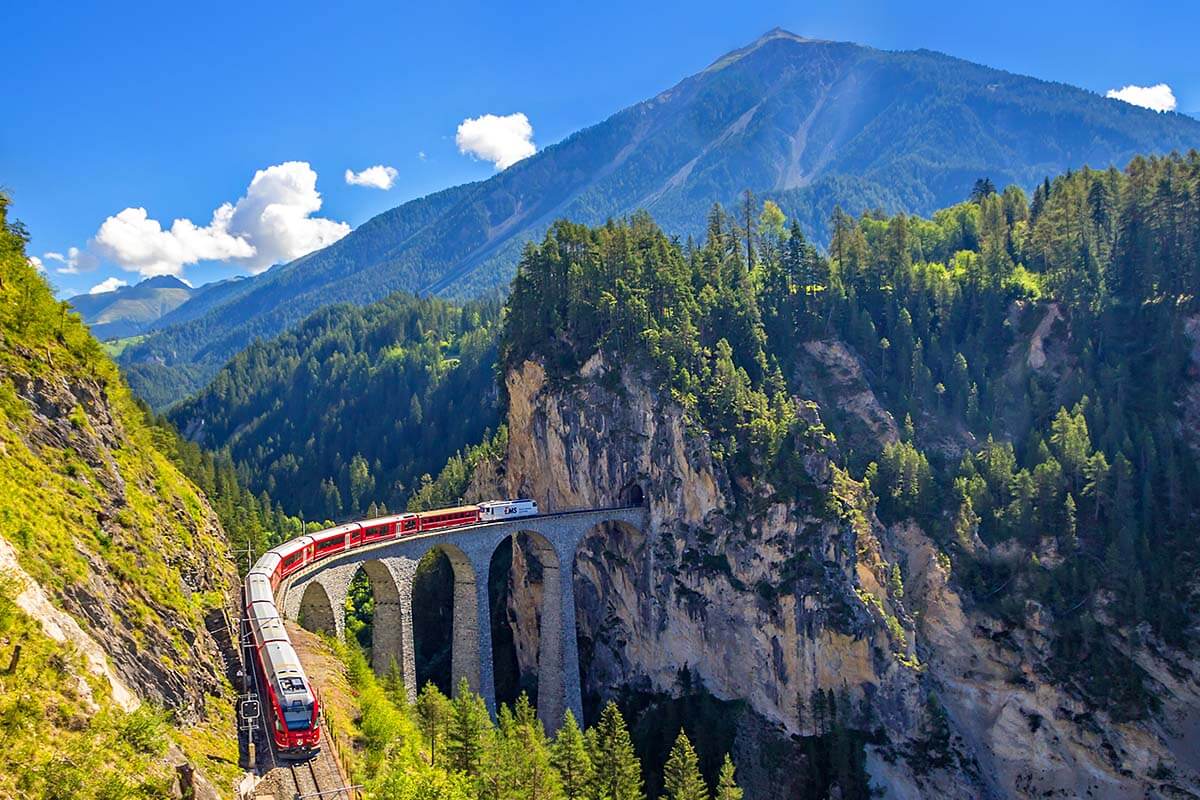
This site contains affiliate links, which means that we may earn a small commission, at no cost to you, for qualifying purchases. It supports the work that goes into keeping this content free. Thanks for reading! More info: Privacy Policy.
When planning a trip to Switzerland, you’ll likely see the Swiss Travel Pass mentioned everywhere.
But what exactly is the Swiss Travel Pass, what does it include, where can you buy it (hint – here), and is it worth it?
We get so many questions from our readers about the Swiss Pass (and Swiss Pass Flex), which discounts it offers, and whether it covers some of the most popular destinations in the Swiss Alps. Many first-time visitors find it a bit confusing and I keep answering the same questions all over again…
So to save all of us some time, here is our complete guide to the Swiss Travel Pass. It should answer all your questions, give you a good overview of what exactly is included (and what is not), and help you decide whether it’s worth getting it for your trip. Find out!
PRO TIP: Get the Swiss Travel Pass for your entire trip—the longer the duration, the lower the daily cost, making it even more worthwhile. Reserve your pass here.
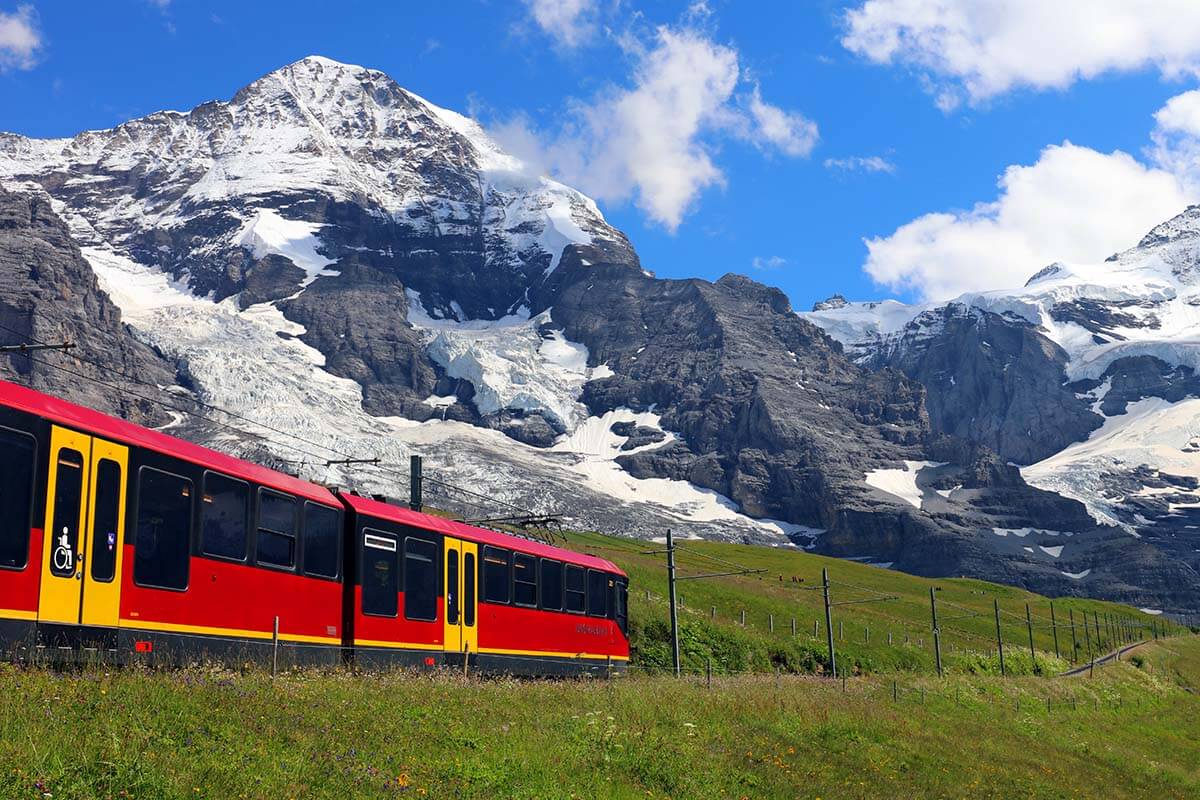
What is the Swiss Travel Pass
The Swiss Travel Pass is a ticket for international visitors that includes unlimited travel on public transportation in Switzerland for a selected number of days. You can buy this pass for 3, 4, 6, 8, or 15 days of travel.
All the information is available on the official website of the Swiss Railways (SBB), but apparently, it’s still too confusing for many people (thus, this article). Quite honestly, the website isn’t very user-friendly, even if you already know what you are looking for, not to mention if you are just starting to research and plan your trip…
TIP: We recommend booking your Swiss Travel Pass on GetYourGuide. It’s our go-to platform for tickets, tours, and passes worldwide. It’s easy to use, offers flexible cancellations, and keeps all your bookings organized in one app. Plus, when you book through our link, you support our site at no extra cost to you, helping us continue to share helpful travel tips!
Good to know: Traveling by train is the most convenient way to cover bigger distances in Switzerland and explore many of the nicest places in the country (not just cities, but also mountains). Furthermore, public transportation in Switzerland is very efficient and we sometimes joke that you can set your watch by how punctual the trains are. So for majority of international visitors, it doesn’t even make sense to consider renting a car, and that’s what makes the Swiss Travel Pass so popular.
Below, you can find our explanation of what is and is not included with the Swiss Travel Pass, and how it differs from the Swiss Travel Pass Flex. Read on!
READ ALSO: Switzerland Itinerary for First Trip
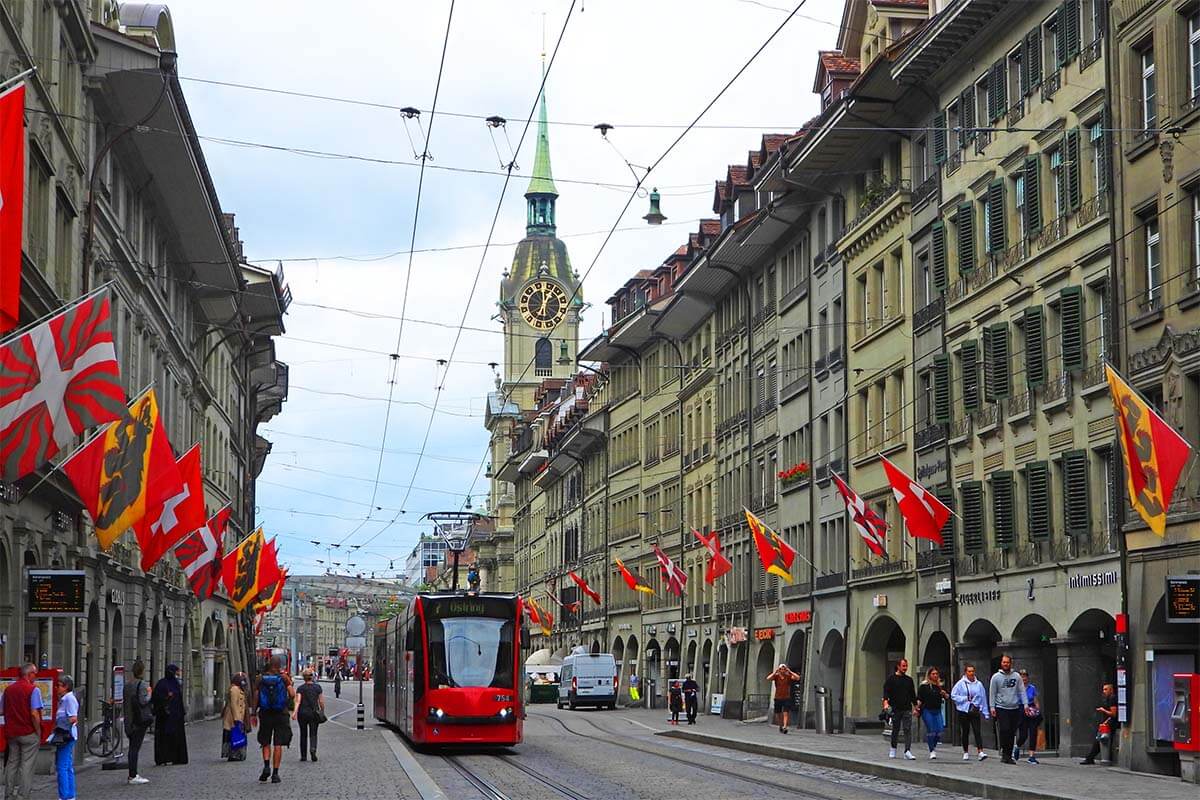
Swiss Travel Pass vs. Swiss Travel Pass Flex
To make things a bit more confusing, there are two types of Swiss Pass: the regular one and the Flex Pass, which is 15% more expensive.
What’s the difference? Both these passes include exactly the same tickets and offer the same discounts (that differ depending on your age). The main difference is that the flex pass allows you to freely choose on which days you use it within its month-long validity, whereas the regular pass is valid on consecutive days (depending on which validity you choose, 3, 4, 6, 8, or 15 consecutive days).
So, for example, you are visiting Switzerland for 5 days and you plan on traveling by public transport daily during your entire stay. In that case, you can simply get a regular pass for 5 days.
On the other hand, if you are in Switzerland for a longer time, but will be visiting different regions and spending a few days in each before traveling further, then it’s better to get a flexible pass. That way, you can use it only on those days when you will be taking public transportation a lot. Further below, you can find a bit more information about how to use both these passes.
Important to know! This is where it starts to get confusing to foreigners visiting Switzerland for the first time because they think that they will be using public transport every day, also in the mountains. But there is a big difference between let’s say an inter-city train between Zurich and Geneva or a train that brings you to Gornergrat in Zermatt or Jungfraujoch in Berner Oberland.
!!! The majority of gondolas, funiculars, and mountain trains are not part of the Swiss public transport network (and thus not included with the Swiss Travel Pass). However, to make things yet a bit more confusing, there are a couple of exceptions here too. You can find more info below, but first – how much does it cost.
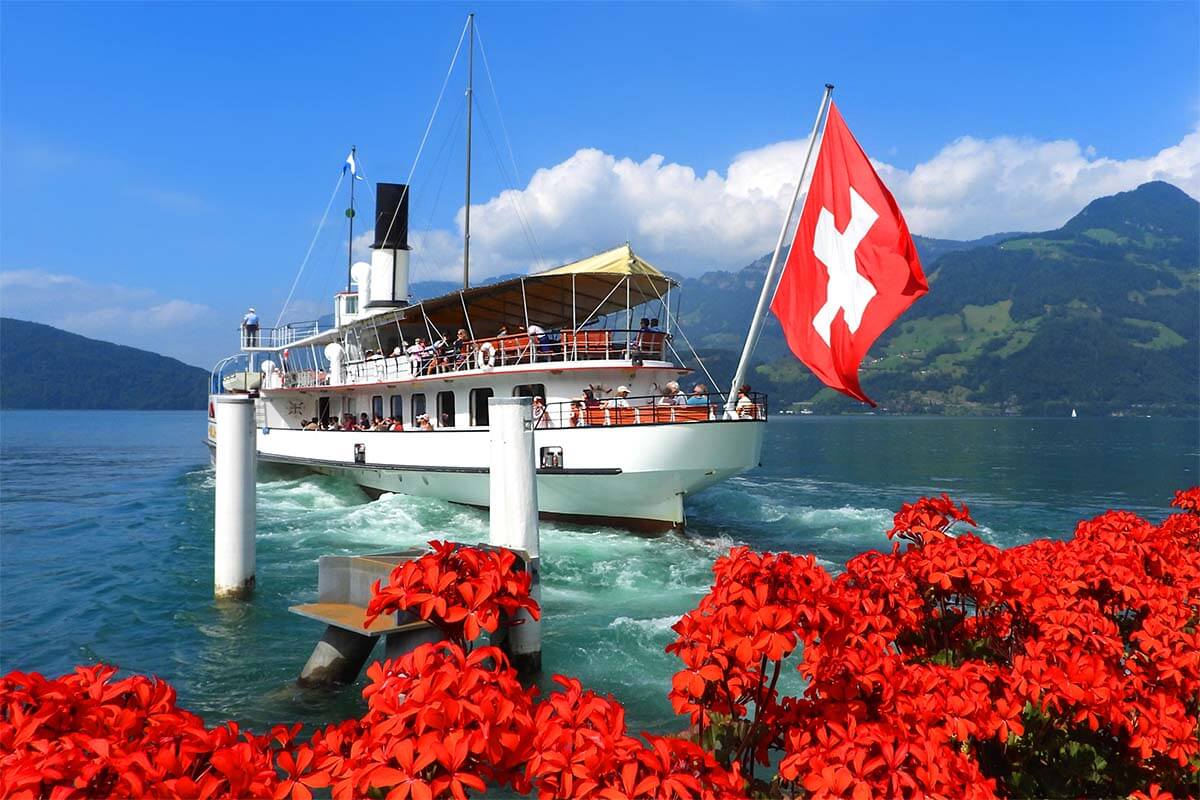
How to use Swiss Travel Pass & Travel Pass Flex
For all passes, you can either print it on a white A4 paper or show an electronic version of the pass on your smartphone or tablet. You can also add it to your Apple Wallet, for example. Since the pass is issued in your name, you might be asked to show your ID as well.
Using the regular Swiss Travel Pass is pretty straightforward since it’s valid for a set number of consecutive days. You’ll simply have to show a printed or electronic version of the pass.
Using the Flex Pass is a bit more complex since you can choose the specific dates on which you will be using it. To avoid misunderstandings, you will have to activate the dates on which you want to use your pass online on this website. It’s important to activate the dates before your first journey, so e.g. you cannot do it when you are already on a train.
You will get all the information and clear instructions when you get the pass, so don’t worry about it too much in advance. Also, you can still adjust your chosen dates as long as you do it before midnight at the start of the day on which you want to use it.
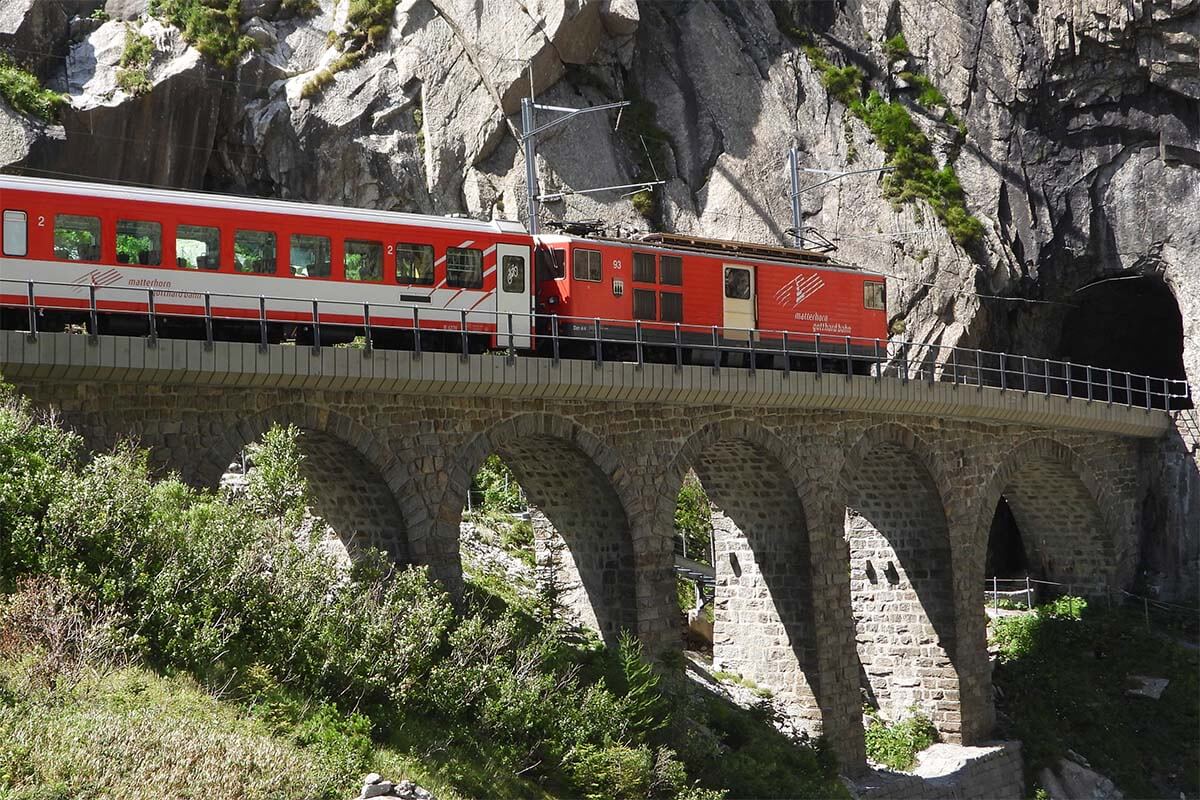
How much does the Swiss Travel Pass cost in 2025?
The price of the Swiss Travel Pass depends on several factors: your age, the number of days, and whether you opt for a regular pass or flex. In addition, you can choose to travel in the 2nd Class or upgrade to 1st Class.
Additional discounts: Children under 6 are free of charge. Children from 6 to 16 travel free when accompanied by a paying parent (you need to order a ticket for them, but it’s free, and you will get the necessary instructions). Youth from 16 to 25 get almost 30% discount.
Here are the prices of the regular pass in Second Class in 2025 for adults:
3 DAYS: 244 CHF.
4 DAYS: 295 CHF.
6 DAYS: 379 CHF.
8 DAYS: 419 CHF.
15 DAYS: 459 CHF.
Good to know: Flex Pass costs 15% more and you’ll have to pay over 55% extra if you opt for First Class tickets.
As you can see, the longer the duration, the cheaper the price that you pay per day. If you just get it for 3 days, it costs you about 81 CHF per day, whereas if you get it for two weeks, it costs you just around 30 CHF per day – a huge difference!
Further below, you can find our observations on whether it’s worth getting the Swiss Travel Pass. But first, let’s take a look at what exactly is included.
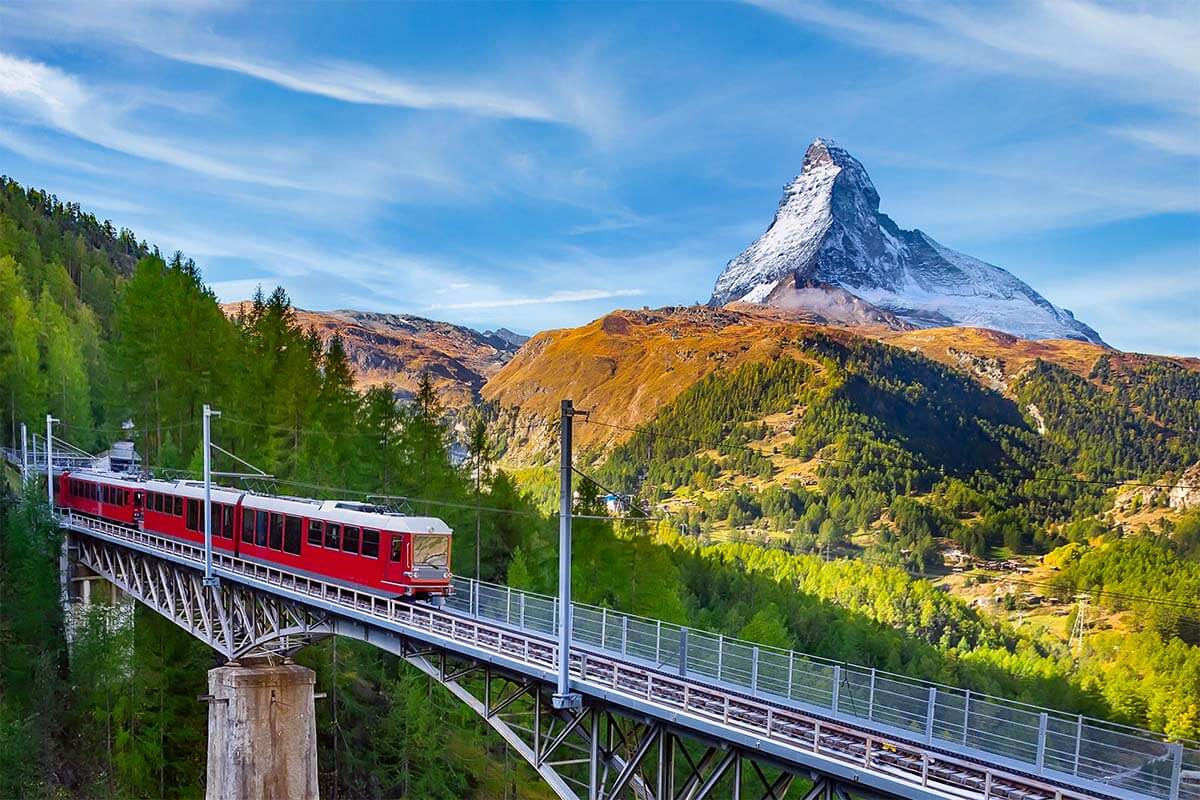
What is included with the Swiss Travel Pass
This is what IS INCLUDED with the Swiss Travel Pass:
- Unlimited travel on trains, buses, and boats that belong to the public transport network. So all the inter-city trains as well as trams and buses in more than 90 towns and cities are included. Passenger ferries (not cruises) on Lake Lucerne or the lakes near Interlaken are included as well.
- Unlimited travel on premium panorama trains (however, there might be extra fees for advance seat reservations). These include the famous Bernina Express, Glacier Express, Golden Pass Line, and a few other panoramic train routes.
- Free entry to over 500 museums in Switzerland. You can find a complete list of all the museums here.
- Free travel on the following mountain excursions: Mt Rigi, Stanserhorn, and Stoos. All of these are located close to Lucerne and are among our top recommendations for the best day trips from Lucerne.
- Up to 50% discount on mountain excursions all over Switzerland. So you get a big discount on the majority of the cable cars, mountain trains, funiculars, etc. There are also discounts on certain lake cruises and similar.
Below, you can find a bit more info about what is not included with the Swiss Pass (but where you get a discount).
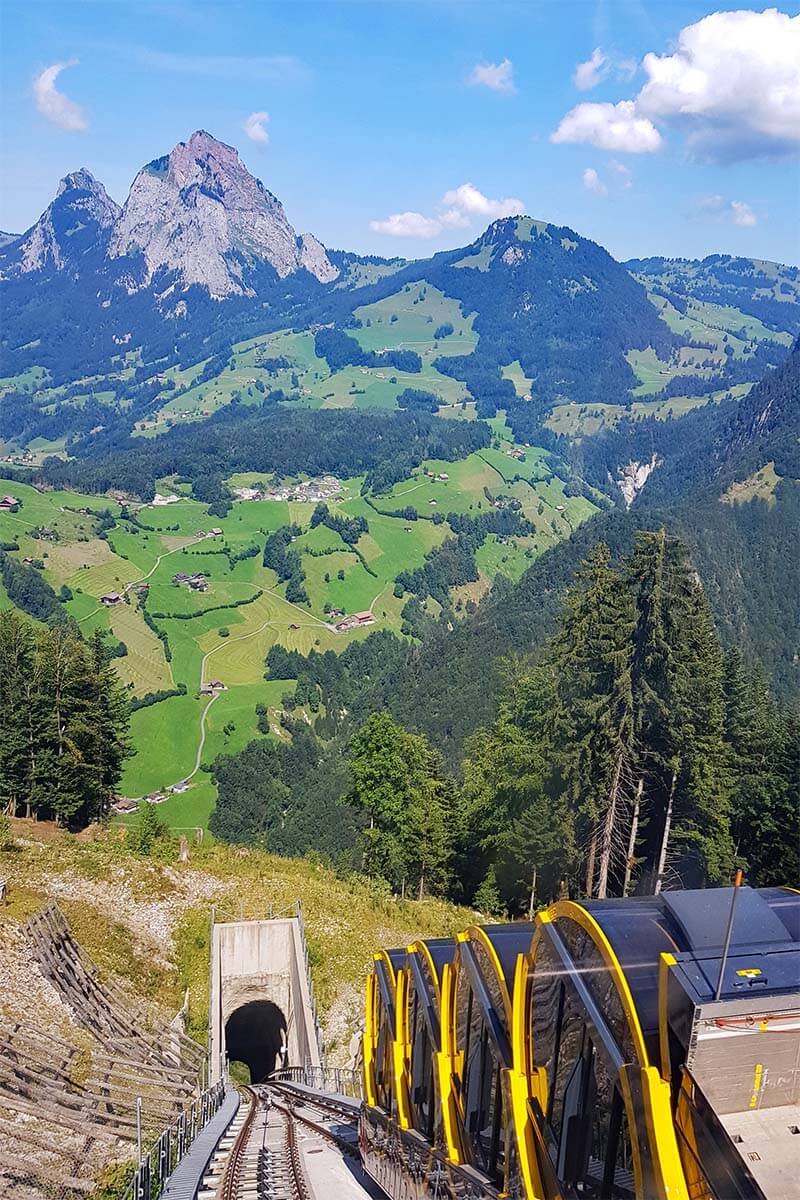
What is not included (but gives you a discount)
Because I get this question almost daily, here is once again an explanation of what IS NOT INCLUDED with the Swiss Travel Pass.
Mountain excursions are not included with the Swiss Travel Pass (with the exception of Mt Rigi, Stanserhorn, and Stoos as mentioned above), but you do get a discount on most of them. Under ‘mountain excursions’ they mean cable cars, gondolas, funiculars, cogwheel trains, trains to the mountain peaks, etc.
Here are a few examples of the most popular mountain excursions that our readers ask about and where the Swiss Pass does not include free travel, but gives you a discount:
- Grindelwald-First cable car – 50% discount.
- Mt Pilatus cable car and/or cogwheel train – 50% discount.
- Mt Titlis gondolas – 50% discount.
- Schynige Platte railway – 50% discount.
- Oeschinensee cable car – 50% discount.
- Gornergrat railway and Matterhorn Glacier Paradise gondolas – 50% discount.
- Jungfraujoch – about 25% discount. Or about 40% if you only go to Kleine Scheidegg.
There are many other destinations in the Swiss Alps where you get similar discounts with the Swiss Travel Pass.
Also, most lake sightseeing cruises are not included, whereas regular, scheduled passenger ferries are included with the Swiss Travel Pass. So if you are taking a ferry that stops in various places, your pass will be valid, but if you want to take a scenic cruise on e.g. Lake Geneva or Lake Lucerne, you’ll have to pay for it.
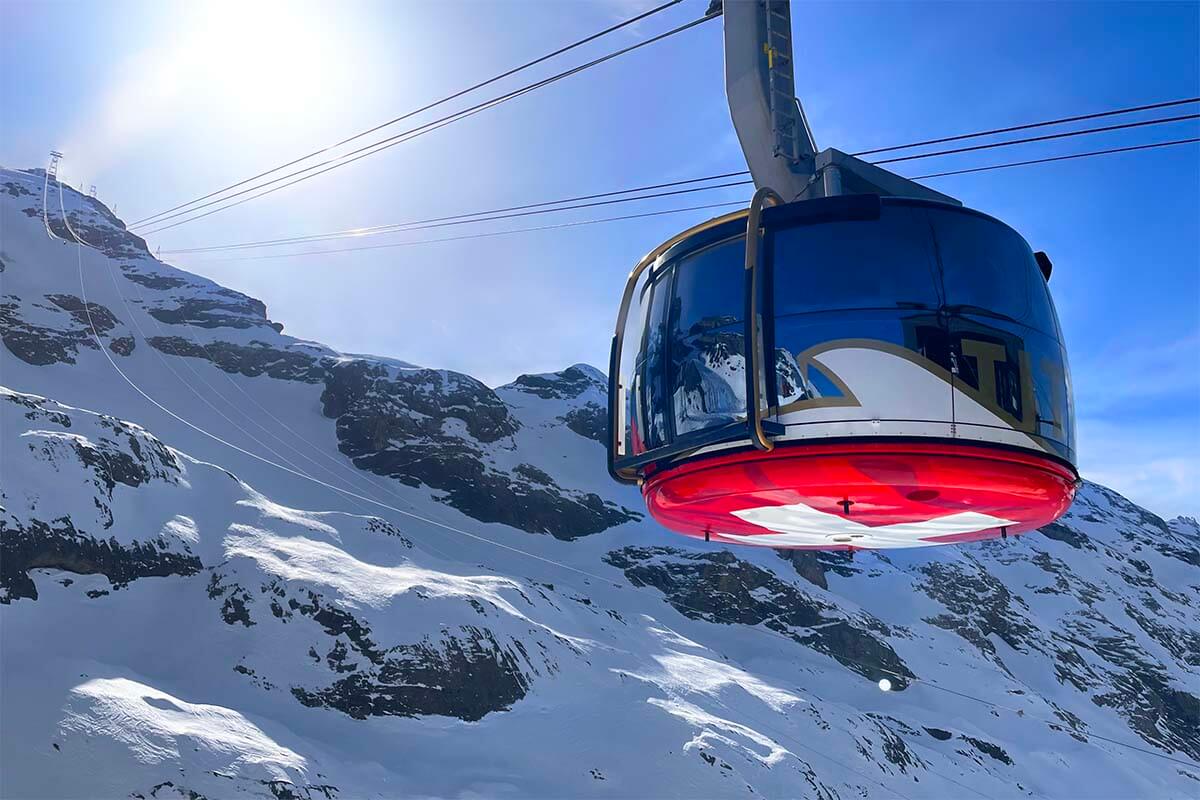
Is the Swiss Travel Pass worth it?
One of the most frequently asked questions by our readers is whether it’s worth getting the Swiss Travel Pass. My answer is always the same – it depends. Here are a few examples:
If you are traveling around Switzerland for a longer time (6-10 days or more) and plan on visiting many different areas all over the country using public transportation, then the Swiss Travel Pass is definitely worth it. The pass gives even better value if you are traveling with children.
If, however, you are only coming for a few days, renting a car, and/or planning on staying in one region in the mountains (where this pass only gives you a discount and not free travel), then it’s usually not worth it. In that case, look for a regional card of the area that you are visiting. In some cases, it might be better to buy the Swiss Half Fare Card.
Most likely, your trip includes a mix of destinations that you only visit for a day as well as others where you stay for several days. In that case, you can look up the prices of all the mountain excursions that you are planning to do, see how big the discount is with the Swiss Travel Pass, add the price of the pass itself, and then compare that versus the prices of individual tickets of all the transportation and places you plan to visit. (Good luck with the math! It’s doable, but you’ll need a lot of time and patience).
In most cases, the Swiss Travel Pass is worth it, especially if you are traveling for at least 6-8 days and are visiting multiple destinations in Switzerland. Plus, it saves you lots of time, research, and math. Another advantage is that you can just take the next suitable train, boat, etc. without having to waste time looking for tickets. Some examples of regional cards include the Jungfrau Travel Pass or the Berner Oberland Regional Card, and there are many others.
Furthermore, you can always opt for a Swiss Pass Flex that you only use on travel-intensive days. And then get a regional card to use on the other days, when you are staying in one area. The longer you stay in one place (typically, 3-4 days or longer), the better value you get with the regional cards.
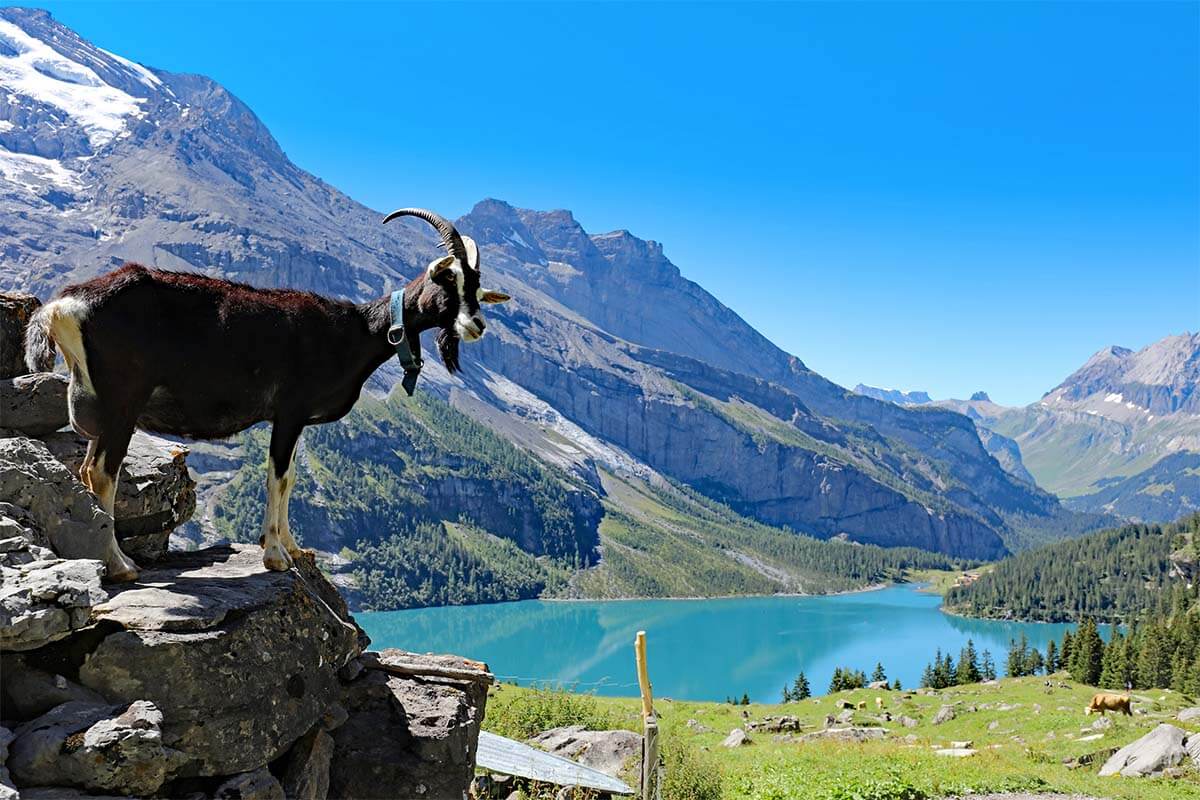
Where can you buy the Swiss Travel Pass?
You can buy the Swiss Travel Pass online, at every major railway station in Switzerland (including Zurich or Geneva airports), and also at some tourist offices in the main cities.
We recommend getting it online in advance as it will save you time and stress (you’ll have enough to think about upon arrival as it is).
You can get the Swiss Pass on the official SBB website, but also via various online retailers, such as our GetYourGuide as mentioned before (our personal favorite one-stop shop for all tickets). The price is normally exactly the same everywhere and you get the same discounts for kids, etc.
At the moment of the last update, GetYourGuide allows you to cancel for free up to 24 hours in advance (and it’s really easy to cancel or amend your tickets). You can buy a regular Swiss Travel Pass here and a Swiss Travel Pass Flex – here.
In any case, it’s best to buy your tickets at least a few days before your trip. When you purchase a pass, you will receive detailed instructions on how to use it (or how to activate the individual travel dates if you opt for the Flexi Pass).
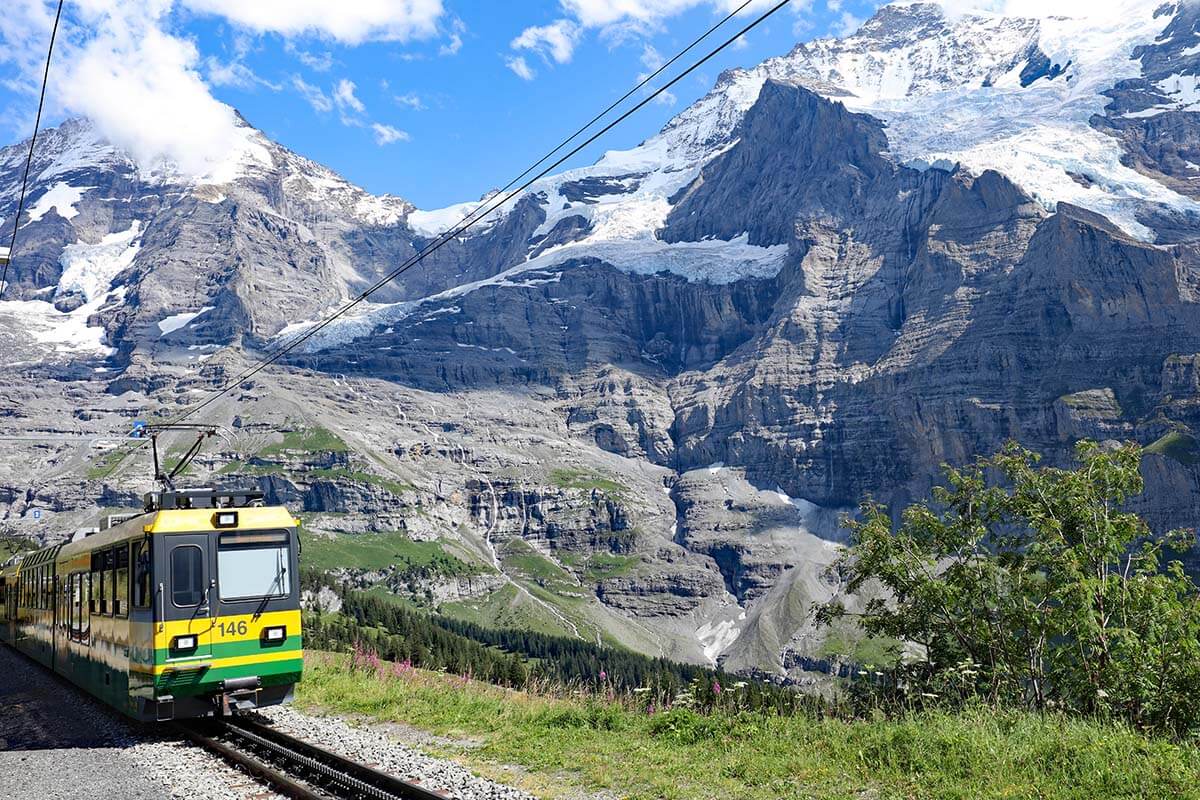
So, this is our guide to the Swiss Travel Pass. I hope that it answers all your questions and helps you decide whether it’s worth it for your trip.
TIP: If you are planning your itinerary in Switzerland, check out our Switzerland travel page. It contains an overview of all our travel guides for a wide variety of destinations all over the country. We live in Belgium and Switzerland is just a half-day drive from home. So we visit Switzerland at least a few times a year – in summer as well as in winter. On our blog, you’ll find many detailed guides for all of our favorite places.
READ ALSO: Traveling to Europe: How to Plan a Trip & Useful Tips
TIP: Did you find this guide helpful? Bookmark this post for later, share it with your friends, and save it to Pinterest to inspire your next trip.
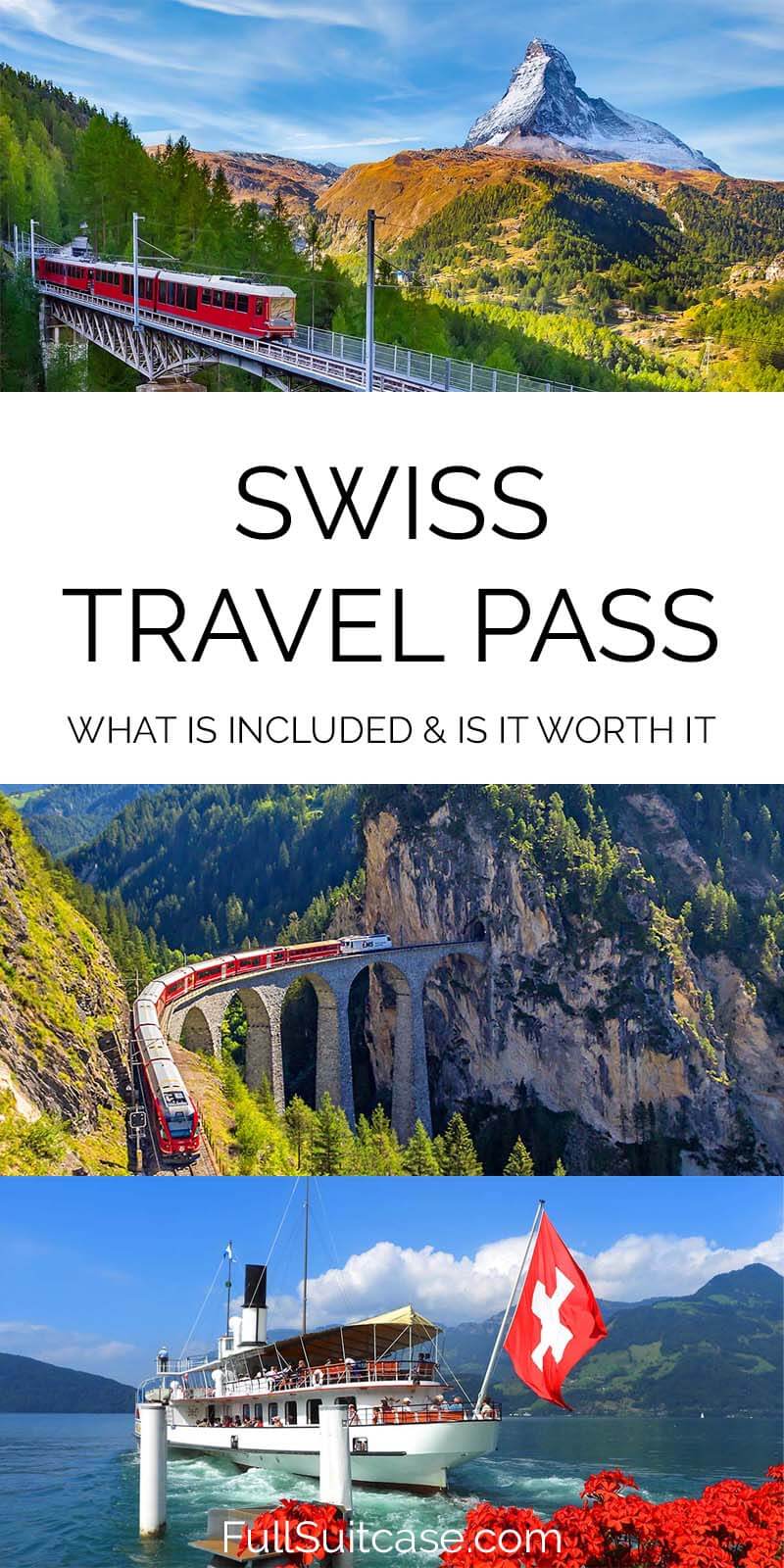
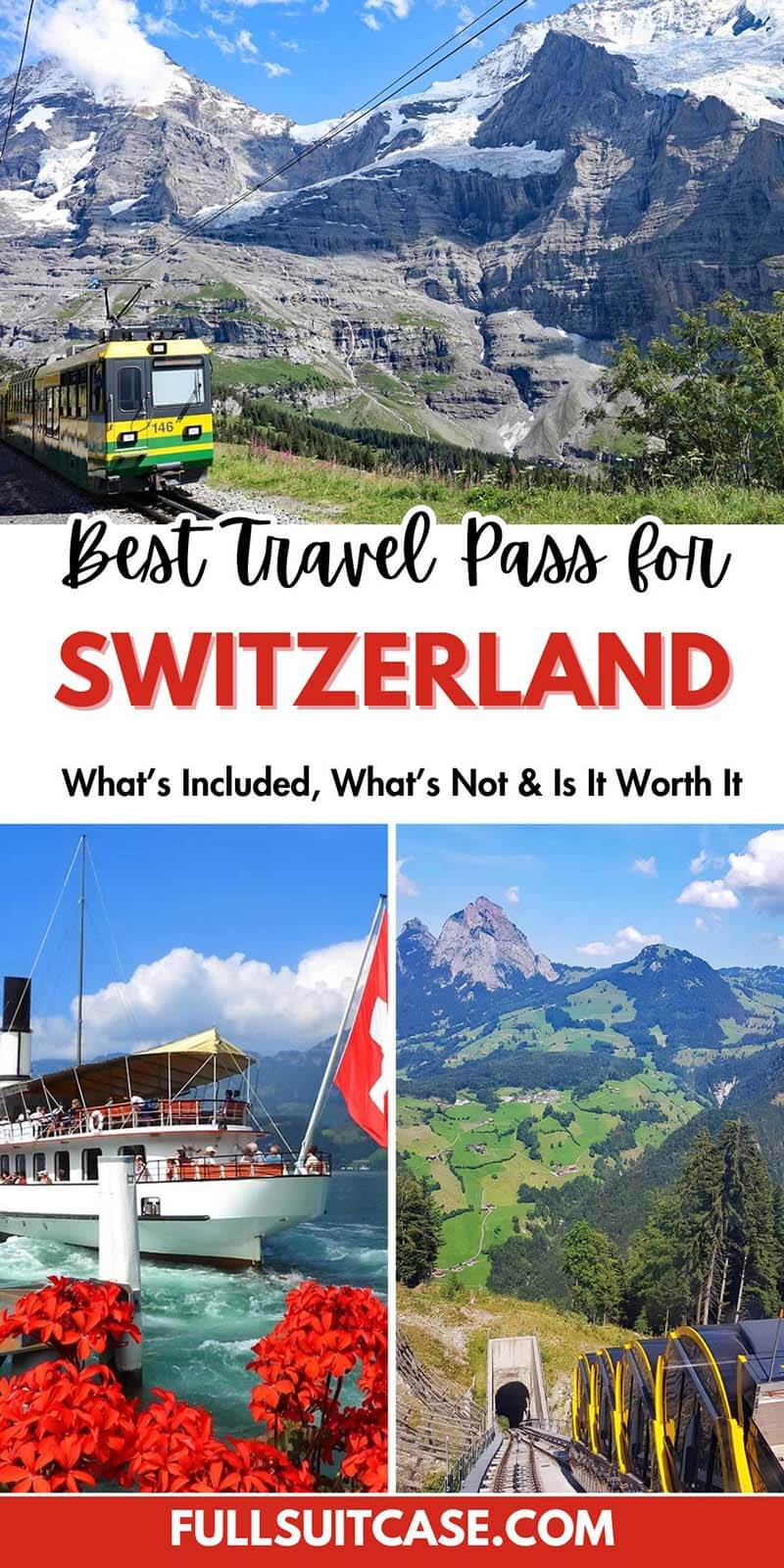


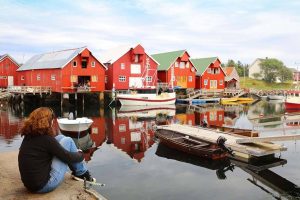
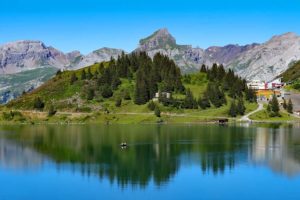
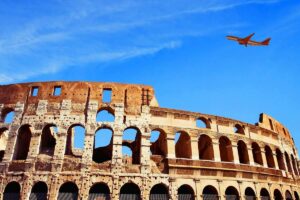
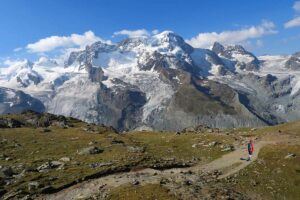
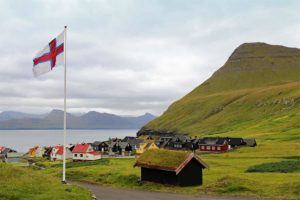
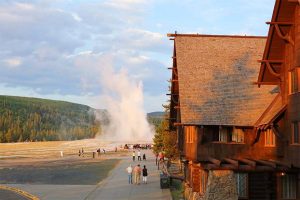
Hi! You have done a fantastic job with this article. I love that you are interacting and helping people decide what’s best! So here are my Itinerary and question. Thanks so much. Trying to decide on a 3 day Travel pass. Also is there an Italy and swiss combo?
Fly into Zurich from USA Stay in Old town, Zurich 4 nights looking at tours to Rhine falls one day and a Lucerne/ Mount Titlis Tour one day then take train to Chur ride the Bernina express to Triano then train to MILAN. Stay in Milan 2 nights train to Lake Garda 3 nights and then train to Venice 3 nights and fly out of Venice back to USA. This my daughter’s Graduation from high school gift so trying to do it right!
Also I am still confused about the bernina Express. I was trying to just reserve my seats for June 2026 but it is crossed out. is it too early to reserve or did I miss it and its filled already. This was the biggest thing my daughter wanted to do. can I reserve before i buy a travel pass?
Thanks SO much for your insight.
Hi Lisa, thanks so much for your feedback, and what a nice graduation trip for your daughter!
A 3-day Swiss Travel Pass can work well for your plans, including the Bernina Express. Visit Zurich first and group the day trips outside the city in such a way that you make the most of your pass. For the Bernina Express, it’s totally normal that June 2026 isn’t open yet — reservations usually open about 6 months ahead. And yes, you can reserve seats before buying the pass (just choose the “seat reservation only” option).
There’s not really a specific combined Italy–Switzerland pass. European citizens can opt for Interrail pass and non-Europeans for the Eurail Global Pass – both cover multiple countries. But these aren’t really worth it in your case, since these passes are valid for 15 days or more, plus, you need to pay extra to reserve high speed trains in Italy anyways. I’d get a Swiss Pass for Switzerland and separate tickets on Trenitalia trains once you continue from Tirano to Milan, Lake Garda, and Venice.
P.S. If you’d like more travel tips, use the search function on our site (via the magnifying glass icon at the top) — we’ve covered many of the destinations on your itinerary.
Hi Jurga,
Thanks for the simplified explaination. However, which station do I need to take for Bernina Express? My route will be from Zurich Airport to Engelberg, we will stay in Engelberg for 3 days, after which we will be back to Zurich for 1 night before flying off. We will be going day trip to Rheinfalls & Lucerna. So meaning to say if we can just hop in to Bernina Express Train without reservation to avoid additinal charges?
Hi Hanna, the Bernina Express starts in Chur (about 1h30 by train from Zurich). You do need a seat reservation for the panoramic carriages—those aren’t included in the regular ticket or Swiss Travel Pass. If you’d rather avoid the reservation fee, you can take the regular regional trains on the same route (same views, just standard carriages). Also, keep in mind that the ride itself – from Chur to Tirano – takes about 4 hours one way (plus, you have to get back!). So it’s a very long day trip in itself, and not something you can easily fit in along the way between Zurich and Engelberg.
As for your other plans: Lucerne is on the way to Engelberg, so it’s easy to visit when traveling to or from there. The Rhine Falls, on the other hand, are north of Zurich and best visited from the city. You only need about half a day for that (there are also tours available). I wouldn’t recommend combining Lucerne and the Rhine Falls on the same day, as they’re in completely different directions.
It may help to take a good look at the map and travel times between places, then adjust your itinerary to minimize backtracking. Otherwise, you’ll spend more time on trains than sightseeing.
Hope this helps. Have a nice trip!
Hi Jurga,
Your page is so informative but this Swiss pass is very confusing. Can you please help me we will be reaching zurich and going to lucern same day do some local activities may be boat ride on lake lucern in the evening, and then day 2 mount rigi and remaining local activities. day 3 heading to interlaken and visit Harder Kulm in the morning and spend evening at interlaken. Day 4 Grindelwald visit first walk and head over to Bern in the evening. Day 5 visit Bern and then afternoon head back to Zurich. day 6 Rhine falls and zurich . day 7 zurich. Can I just get one regional pass for 4 days and Swiss pass for 6 days? what other options you recommend? thank you.
Hi, based on your itinerary, the Swiss Travel Pass is definitely the most convenient option. It covers all your train rides between cities, the regular boats on the lakes, the train to Rigi, and gives you a 50% discount on most mountain trains and gondolas (e.g. to Grindelwald First).
A regional pass wouldn’t really make sense, since those are only worth it if you stay in the same area for at least 3 days, which isn’t the case with your route.
I’d recommend getting an 8-day Swiss Travel Pass and using it for your entire trip. The price difference compared to the 6-day pass is only about CHF 40 (for regular pass), and if you’re planning to visit any museums in Zurich, use public transport, or take the train to the airport, the 8-day pass will likely work out cheaper and be much simpler.
Hope this helps. Have a great trip!
Thank you.
Helloooo!! Thank you so very much for your very helpful page!! Truly appreciated. I Will be in Switzerland next week…7/9-7/18. I plan on getting the Swiss Travel Pass. I also plan on buying it online before we arive. My question is….when buying the Golden Round Trip for Mt. Pilatus, for example, when will the STP be applied to get discounts on some of the modes of transportation included in the Golden Round Trip?? Or do I just buy the Golden Round Trip separately and there will be no discounts from the STP? Thank you so much for your time!
Hi Janine, yes, you can get a discount on the Golden Round Trip with the Swiss Travel Pass. In fact, with the pass, you don’t need to buy the full Golden Round Trip package, since several parts of it — like the boat ride and public transport in Lucerne — are already covered.
You’ll just need to purchase tickets for the ascent and descent on Mount Pilatus, and you can do that either online via pilatus.ch or at a local ticket counter once you’re in Switzerland.
If you’re planning to take the cogwheel train to/from Alpnachstad, reserve a time slot in advance. It’s separate from your ticket.
Hope this helps. Have a great trip!
Hi Jurga,
So grateful for this page. Super helpful in what is a very complex system (for me!).
We are arriving in Zurich at the end of Aug, heading to Stoos via train the next day, and then spending the night in Lucerne. From Lucerne we will go via Interlaken to Grindewald, then possibly to Kandersteg before heading to Oeschinensee to finish off. From my research, it doesn’t seem like there is one travel pass that suits all of that. So I was wondering if you have any suggestions of what to use?
Thanks so much,
Beck
Hi Beck, thanks so much – glad you found the page helpful!
And yes, you’re right, there isn’t one single pass that covers everything on your itinerary.
If you’re traveling by car, the Half Fare Card is a good option. It can also work well if you’re not using public transport every day. You can read more about it here.
However, if you’re relying entirely on trains and public transport, the Swiss Travel Pass is likely your best bet. It covers all public transport and gives you a 50% discount on most mountain trains, gondolas, and cable cars. It also gives you full flexibility—no need to buy individual train tickets or worry about schedules.
Hope this helps. Have a great trip!
Hi,
We are going to Switzerland this coming October and want to stay in Zurich for 7days.
I’m interested to buy Swiss day pass for 4 days.
My question is do I need to book our travel by bus, train or boat if we have swiss travel pass or we can just ride for those Transporation anytime without booking.
Kind regards
Maria
Hi Maria, one of the big advantages of the Swiss Pass is that you don’t have to reserve trains in advance. It gives you a lot of flexibility (for example, to decide where to go each day based on the weather forecast). Buses and boats normally don’t have reservations. Only the scenic train rides like the Bernina Express or the train from Kleine Scheidegg to Jungfraujoch are best reserved in advance. But for regular travel on public transport, you hop on and are good to go.
Enjoy your trip!
Hi Jurga
Thank you so much for your website – easily the best of the ones I used in my research. Never would have known about the Trummelbach Falls without your guide.
Planning a 6 day trip – current plan:
26-JUL fly to Zurich; train to town centre, stay 1 night
27-JUL train to Lucerne – explore/lunch, then train to Interlaken; stay 3 nights
28-JUL Jungfraujoch trip
29-JUL Lauterbrunnen trip, see Trümmelbach Falls , Panorama Trail hike
30-JUL Train to Geneva; stay 2 nights
31-JUL Trip to Chamonix https://fullsuitcase.com/one-day-itinerary-chamonix-france/
1-AUG Fly back from Geneva.
Given the above is any pass worthwhile? By booking ahead I can get supersaver fares. Maybe the Jungfrau or Berner Oberlander pass?
Is the Lucerne – Interlaken Express a panoramic train? You need to book that specifically or just on the day?
And for the Interlaken to Geneva train is their a scenic route?
Many thanks
Hi Phil, Thank you so much for your kind words — I’m really happy to hear my site helped with your planning!
For your trip, supersaver fares are usually the cheapest if you can commit to specific trains. But that requires advance planning – to the detail. Otherwise, Swiss Travel Pass is likely worth it the most since you are not staying long enough in Jungfraujoch to really take advantage of the regional passes. One of the main advantages of Swiss Travel Pass is that you don’t have to commit to specific trains and have more flexibility.
For the trains, the Lucerne–Interlaken Express is a panoramic train, but you don’t need a reservation. Interlaken–Geneva is not a dedicated panoramic route, but it should be beautiful too. We have never done this route by train, but have been to the area by car multiple times, and it’s stunning.
May I suggest a few things – if you feel like adding more to your itinerary. Otherwise, feel free to ignore this – your itinerary is good too and more relaxing ;).
26/7 I would skip Zurich and head to Luzern right away.
27/7 Do the Mount Pilatus Golden Round Trip first thing in the morning and explore the city center for a few hours before heading to Interlaken. In Interlaken, take a funicular to Harder Kulm (it runs quite late in the evening).
28/7 The day you go to Jungfraujoch, you could easily do the Panorama Trail as well – that would save you an extra expensive train ride. You could first visit Jungfraujoch and then hike from Kleine Scheidegg to Männlichen, from there, you can go down to Grindelwald or Wengen. You could also start in Wengen, take a gondola to Männlichen, hike to Kleine Scheidegg, and visit Jungfraujoch in the afternoon. Either way, start early. In the late afternoon, you can spend some time in Wengen or Grindelwald – depending which way you decide to travel.
29/7 Lauterbrunnen and Trummelbach Falls could easily be combined with Mürren and potentially Schilthorn. Start early. Alternatively, after visiting Lauterbrunnen and Trummelbach Falls, you could come back to Interlaken and take a scenic boat ride on one of the lakes.
Hope this helps — have a wonderful trip!
Hello Jurga, could you please give us a suggestion? My husband and I planning to visit Switzerland in late August, Saturday, Sunday and Monday. We would like to visit Jungfraujoch, Matterhorn, Rhine Falls, Lake Lucern, Mount Pilatus, and other nice places, like Interlaken and lauterbrunnen. Do you think we can visit all of these places? We don’t have much time, because this is just a layover. Thank you in advance.
Hi Sally, there is no way to visit all the places you mentioned in three days. What you could do is base yourself in Lucerne (my preference) or Zurich and make day trips. Check out this article for some ideas: Best day trips from Lucerne.
To see the most spots from your list, you could do Lucerne and Mt Pilatus in one day, Jungfaujoch and Interlaken (plus potentially Lauterbrunnen) on another day, and maybe Zurich and Rhine Falls on yet another day – this would be best if you’re flying to/from Zurich.
I think I would skip Zermatt (Matterhorn) unless you’re prepared for a very long day trip with little time for actual sightseeing).
Anyway, check the article I linked to above for more details and ideas.
Have a great trip!
Yeah I wish I can stay longer. Thank you for your help.
I have already purchased a one way ticket from Venice to Lauterbrunnen and then one from Lauterbrunnen to Zurich a few days later when we leave. While in Lauterbrunnen, we want to experience Grindelwald with Grindelwald First, Lake Brienz/Interlaken region. We will only have 1 day in Grindelwald, 1 day in Lauterbrunnen and 1 day in Interlake area. First question would be should i get a Swiss Travel Pass. If so – is there a way to include any of the one-way tickets I already purchased if they are, in fact, included?
Hi Christina, the Jungfrau Region Travel Pass for 3 days is the best option for you. It includes everything in the region except the last part of the train trip to Jungfraujoch, but you can get discount on that with the pass.
Since you already purchased other tickets, keep and use them. Swiss Travel Pass makes no sense for this trip.
Hi Jurga,
We are buying swiss pass for our trip in April. My question is – should we book the mountain excursions tickets while buying swiss pass or is the discount better if we just get swiss pass now and get mountain excursions on the spot? That will also give us flexibility if our plan change for some reason while we are visiting as far as mountain excursions are concerned.
Thanks!
Hi Abhi, it depends a bit on which excursions and when exactly you are visiting in April. If it’s around Easter, you may want to prebook the most popular routes, like Jungfraujoch. You should be able to book most tickets with the Swiss Pass discount online in advance (even if your pass is not valid now – what matters is that you have it and can show it on the day when you visit).
But overall, for most places, you should be able to just decide on the spot and get your tickets there.
Have a great trip!
hi jurga,were coming to switzerland for 10 days and confused about what travel pass should i get.
geneva-june19-20
zermatt-20-21-22-23
interlaken-23-24-25-26
lucerne-26-27-28-29
munich29-30
during our stay, will also cover some major attraction, but not planning to take the glacier express. i hope you can help me decide if i should get swiss pass or the half.
thank you in advance
Hi Ayen, it all depends on how you plan to travel. If you are using public transport (trains, boats, etc.), then the Swiss Travel Pass is the best option. Whereas if you are traveling by car but are planning on doing many mountain excursions (gondolas, mountain trains, etc.), it’s better to get the half-fare card. You can find more information in this guide: Swiss Half Fare Card.
PS None of these cards will work in Munich (or to get there) since it’s in another country.
The site was very easy to use and very helpful. As repeat visitor to Switzerland a refresher on what is covered with the Swiss Travel Pass was needed. The Swiss Travel Pass makes traveling in Switzerland much easier.
Glad to help, Crick. Have a great trip!
Hi Jurga
We are coming to Switzerland for 8 days in April this year. Our travel agent has purchased the Swiss travel pass for us. I see the ferry on Lake Thun and Lake Brienz are both free with the STP which Lake do you recommend as we will have a free day. Staying at Grindelwald and do we need to book in advance. Many thanks Sue and Graham
There are so many wonderful ways to spend a day in Grindelwald—some even more exciting than visiting the lakes of Interlaken. However, April isn’t the best time for everything and without knowing your overall itinerary, how much time you have in the region or your interests, it’s a bit tricky to make a specific recommendation. Since your travel agent knows your plans well, why not ask them for advice? Assuming, they are familiar with the area, they can help you decide what’s worth your time most—after all, that’s part of the service you’re paying for.
If you do decide on Interlaken, don’t worry about bookings. With your Swiss Travel Pass, you can simply hop on any train or regular ferry without needing to reserve in advance. That said, I would check the boat schedule and opening times of the places you want to visit in advance since it’s shoulder season. For more inspiration and day-trip itinerary ideas, please see our guide to Interlaken.
Have a great trip!
Thanks Jurga, your trip advisory is the most comprehensive I could found on the net. Bravo!
I am planning to stay in Lucerne as a base for 4 nights plus additional 2 N in grindelwald.
Also planning to add 2 nights stay at lake como( is it advisable-any insights)
Kindly advise how to structure the trip, should we start the trip from Lucerne or grindelwald( will be landing & departing from Zurich
Thanks
VG
Hi Vaibhav, there is not one ‘best’ way to plan a trip like this. Lucerne is a great base for many excursions in Switzerland and Grindelwald is always a good idea with lots to do in the surrounding mountains.
You may want to check the following articles for more information:
Best day trips from Lucerne
Best things to do in Lucerne
Grindelwald-First
Jungfraujoch
Our Switzerland itinerary may also give you some ideas on how to structure your trip.
As for Lake Como, it’s stunning and well worth a visit as well. We have tons of articles about that area on our website as well. Here are a few to start with:
Best places to see in Lake Como
Lake Como travel tips
Where to stay in Lake Como
Hope this helps.
Have a great trip!
Hi, Travelling to Swiss for 12 days Starting from Zrh-Chur(2nite)-Tirano(0)-Chur-Lucerne(3nite)-Interlaken(4nite)-Zrh(2nite), covering major attractions at each of these locations
Which will be good Swiss Continous pass or Half card, Will really appreciate you help to decide on this, thanks and best wishes,
Hi, if you are traveling everywhere by train, then yes, the Swiss Travel Pass is the best option for you.
Thanks for your response
Hi Jurga, thanks so much for your tips and explanations. We are preparing a 12 day trip in Switzerland, staying in Spiez, mostly to hike. Planning to buy the regional Jungfrau travel pass for 8 days. Given we’re coming/returning by train from Geneva + expecting to do 2 one day trips (1 in Zermatt + 1 in either Bern or Luzern), we’re considering buying the Swiss Travel pass for 4 days (Flex option). We understand it means 4 non consecutive days within a month.
Question: We are buying a Swiss Travel flex for 4 days which are not the dates when we are going to use the regional Jungfrau pass.
Do you think we can have a discounted price on regional pass if we have bought a Swiss Travel pass Flex before?
Thanks, Louise
Hi Louise, a few things. First, if you are staying in Spiez and don’t have a car, then it might be better to get the Berner Oberland Regional Pass rather than the Jungfrau region pass. It covers a much wider area. For example, it also includes a train or a bus to Kandersteg and a gondola to Oeschinen Lake, a train to Bern and Luzern, and next year even the mountain excursion to Schilthorn. On the other hand, it doesn’t include all the routes around Wengen-Kleine Scheidegg for free, some only at a discount. See the map of validity for 2025 here.
So which pass is best for you really depends on what exactly you are planning to do during your trip.
Second, if you get the flexible Swiss Pass, any use of it will – in principle – use up a day. So it’s not like you can get a flexible pass for 4 days and then expect to use it to get discounts during the entire month.
@Jurga,
Big thanks Jurga! We wanted to clarify the use of the Flex pass. It was far stretched to combine it with regional pass, thanks for clarifying. With regard to regional passes, we did review the Jungfrau and Berner Oberland passes. We were under the impression that Jungfrau region mountain lifts were more expensive and that’s why we were considering buying the Jungfrau one. But indeed the Oberner Berner does cover a larger playground and offer interesting (and free) train rides. At this stage, we are still trying to figure out which hikes we are going to do. We might buy a 8 day Berner Oberland pass followed by a 4 day Jungfrau pass. Thanks for your assistance, very much appreciated.
Louise
Hi Jurga. Great article, thank you! We will be travelling from Zurich via Golden pass line to Interlaken then we will stay 7 days at Launterbrunnen. Daily we will travel to Jungfraujoch, Grindelwald, Grimmelwald, Bern, Wengen, Murren. Do you think it’s worth to get the Swiss Travel Pass or the Half Pass or a regional pass? If regional pass, what would you recommend? Thanks in advance.
Hi Ange, since you are mostly staying in one region, the Swiss Travel Pass or Half Fare Card aren’t the best choices for you.
You could either get the Bernese Oberland Pass (which is valid in the wide region including train to Bern or Luzern (see the map of validity for 2025 here) or Jungfrau Region Pass (only available to book and use in the summer season, so the link will likely not even work now). The main difference is that the Jungfrau region pass only covers the area around Grindelwald-Lauterbrunnen-Interlaken, but not beyond it (so no train to Bern, for example); it’s also only valid for 3-5 days.
So the Berner Oberland Pass will likely be better in your case.
Keep in mind that some journeys (like to the very top of Jungraujoch or Schilthorn) aren’t included with any of the passes and you will have to pay extra for those (but get a discount with your regional pass).
Also, none of these regional passes will cover the train to Zurich, so you would have to pay extra for that (potentially up to Luzern, from where the Berner Oberland Pass is valid – depending on the dates of your pass/travel).
Hope this helps.
@Jurga, thanks so much for your advice and promptness! One more question; from Zurich Airport, how to get to Luzern and how long to board the Goldenpass so that we can go to Interlaken OST? Appreciate your advice again.
Hi Ange, to get to Luzern from Zurich airport, you will need to take a train to Zurich and then switch to a train to Luzern. There are several other options with different transfer stations, but this is likely the easiest for you.
As for Goldenpass Express, you should be able to find that information on your booking. For most trains, you don’t really need to be there long in advance, but I would definitely arrive at least 15-20 minutes in advance, unless they specifically state that you should arrive much earlier.
Hi,
Love all of your info! If we were going to follow your 10-day itinerary, would we get the 8-day pass?
Hi Kristen, good question! It depends a bit on what exactly you would decide to do on each day. Keep in mind that the price difference between the 8-day and the 15-day pass is so small (at the moment, just 80 CHF in 2nd class and 116 CHF in first class) that it might make more sense to get a 15-day pass anyway. Or stay a bit longer and make even better use of the pass ;). The second week costs just a fraction compared to the first week. The Swiss clearly prefer slow tourism and want to encourage people to stay longer.
Hi,
I need advice on what pass I should use. I would like to travel direct from Cologne to Interlacken. I will only be spending 2 days in Interlacken and then would train it to Zurich where I will stay only 1 day. Travelling with 2 adults and 1 chid. Can you suggest the best way to do this please?
Hi Le, as much as I would like to give you a definite answer, researching every possibility in detail for our readers is simply not feasible for me. It also depends on so many factors – such as what exactly you plan to do in Interlaken, for example.
If you are planning on taking trains and other public transport every day, then it makes sense to get the Swiss Travel Pass, at least for those days when you will be doing most travel. If anything, it saves you lots of headaches having to research and buy separate tickets. Plus, the child will likely be free, depending on their age.
Just keep in mind that this pass is only valid in Switzerland, so you will need separate tickets up to the Swiss border when coming from Cologne. You can buy a train ticket from Cologne to Basel, and from there on, you can use the Swiss Pass.
Have a great trip!
Hey there – do you think it is worth the swiss pass for a 4 day trip? I will be based in Hedingen just outside of Zurich, and plan on spending one day from Zurich to Grindelwald, Lauterbrunnen, and Interlaken, and 3rd day i plan on heading to Stoos Ridge, and the last day will be spent in Zurich 🙂
So many different opinions and its hard to know. it seems it will cost more to just buy tickets as i go, so i am a bit stuck!
Hi Kailey, it sounds like it could be worth it for you, but if you want to have exact numbers, you would have to research all those tickets separately and make calculations. Most people would just get the pass, even if just for the convenience of not having to research anything or make separate bookings. With the pass, you just step on any train and you are set.
Enjoy your trip!
Hello Jurga,
I would like to know is the Swiss Travel Pass included the train fee from Zermatt to Chamonix?
Thank you very much
Hi Dandy, the Swiss Travel Pass covers public transport in Switzerland. Chamonix is in France, just over the border, so you will need to buy a separate ticket for the last part of the journey (which will depend on via where you are traveling).
Hello! I am writing to inform that Stoos funicular is no longer included with the Swiss Travel Pass (we had regular, not flex).
It cost my wife and I 66 CHF for a full day pass with the discount provided by the travel pass.
That’s very strange because on the official Stoos website they still say that “adult GA travelcard / Swiss Travel Pass” is free of charge and that the rates are valid through the entire summer season this year. Also the official website of the Swiss Railways still shows that Rigi, Stanserhorn and Stoos are included with the Swiss Pass. So as long as the official sources say it’s included, you should have insisted on a free journey. Something is not right. Are you sure your pass was still/already valid?!
Hope you enjoyed your trip nonetheless.
Hello Jurga. We are arriving in Zurich on 30 October and then going to Lucerne on 1 November until 5 November. We then have to go back to Zurich to fly to Amsterdam. Apart from the flying part, will the Travel Pass cover us for all of the internal travelling that we need to do back and forth. Thank you.
Hi Karen, the Swiss Travel Pass will cover all train travel and other public transport, some museums, etc. And it gives discount on many mountain rides. It could well be worth it in your case, but it really depends on what exactly you are planning to do each day. The more train trips you plan on taking, the more beneficial it is.
Hi Jurga, What about the guest pass? I booked a hotel that offers guest passes to us. I’m not sure if the Swiss Half Fare Card would be more beneficial for us or if the guest pass will suffice. We are traveling with 4 adults and 1 child (3 years old) and will be staying in Grindelwald for 4 days to cover the First Cliff Walk, Jungfraujoch, and nearby attractions.
The guest passes offered by hotels usually give very small discounts, sometimes free buses or some 10% discount for cable cars, but it’s not comparable with regional passes or Swiss Travel Pass or half-fare card. You can research exactly what is covered by the pass you’ll get but if you are staying in the Jungfrau Region for 4 days, you better get the Jungfrau Travel Pass.
@Jurga, Thanks for your reply and advice. Which pass offers the maximum discount on Jungfraujoch? It’s the most expensive item in our itinerary.
With any pass, you have to pay for the last part of the journey by Jungfraujoch Railway. But the Jungfrau regional pass I linked to earlier will give you a big discount on that too. In the summer season, I think you’ll have to pay about 75chf (63chf in the low season) extra for the train to Jungfraujoch with this pass (vs over 250chf normally).
What is your opinion on the Swiss travel half pass?
Hi Kristi, the Swiss Half Fare Card makes sense if you are in the country for a longer period of time and take an occasional trip by public transport, or if you want to get discounts on cable cars when traveling in different parts of Switzerland. It is very interesting for someone who is in Switzerland for a few weeks and up to a month and travels let’s say every weekend or for people visiting Switzerland by car for a longer time, but it doesn’t make much sense for tourists who come for a week or two and travel extensively for days and days in a row using public transport every time. In that case, Swiss Travel Pass is better.
Update: We now published a detailed guide explaining what the Swiss Half Fare Card is and when it makes sense.
Is it worth buying a travel pass for 4 days?
We will be travelling from Geneva to Gruyere to Lausanne, Zurich and Lucerne. Hoping to fit a scenic rail day trip in too.
Thanks
Hi Annie, if you are planning on taking trains between different cities every day (and other public transport in towns) then yes, it’s definitely worth it. If you just take a train once or twice, then you are better off with single tickets (which can be very expensive if booked last minute or quite affordable if booked in advance).
In general, if you are doing lots of traveling around and don’t want to stress about the practicalities, then getting the pass is the simplest option. It will save you a lot of time on research as well.
@Jurga, thank you so much
With the Family Travel Pass- are the kids allowed entry into the museums for free as well (as long as they are with their parent)?
Hi Becky, if you buy the Swiss Travel Pass for adults as well as kids, then the kids will have the exact same benefits as parents when traveling together. When you choose your pass here, you can indicate how many tickets for each age group you need (kids up to and including 15 are free) and all those tickets will give you the exact same discounts.
Hi do you know if there are any restrictions around buying 2 consecutive Swiss Travel Passes? Myself and my kids are going to be there for 24 days – and it looks like buying a 15-day then an 8 day STP would work better for us than a 15 day Flex – and not cost much more. But is it allowed?
Thanks! Claire
Hi Claire, I don’t see why this wouldn’t be possible. Nobody cares or keeps track of how many passes you buy or when. Lucky you to be able to spend so much time in the country. Enjoy Switzerland!
@Jurga, thank you!
Thank you for this very useful information. The ability to get a refund if buying through Get Your Guide is welcome news.
Q1. I understand seat reservations are now required throughout Europe. How can a seat reservation be made?
Q 2. I want to take the Bernina Express from Chur to Tirano but that train appears sold out. There is a ‘regular’ train available with multiple stops. Does that use the same track?
Hi Mike, normally, seat reservations in Europe are only required for special journeys like e.g. Bernina Express or a fast train from Paris to London, but not for regular trains.
As for the Bernina Express route, regular trains do the same route, but the trains/seats are simpler, they don’t have panoramic windows, there is no info along the way, etc. You may also have to switch trains; I think Bernina Express is the only direct one. What people sometimes do is take the regular train one way and the Bernina Express the other way – you see the same scenery, but save some money on one part of the journey.
I can’t seem to find the list of cities and towns where the pass allows you to use the local transport?
Hi Steff, the Swiss Pass includes the entire public transportation network all over Switzerland, so in all towns. As mentioned in the article, do not confuse public transportation with e.g. mountain gondolas or trains that bring you to mountain peaks – those are not covered.
Hi, what’s the difference between second class and first class and which do you recommend?
Hi Lan, there are a few benefits in the 1st class vs. 2nd. You have more space and more comfortable, adjustable seats on the train. First-class passengers can also sit on a higher deck on most boat trips.
Some trains also have ‘quiet zones’ in the 1st class, but that’s more interesting for business travelers who want to work during their journey.
Hope this helps.
Hi Jurga
My wife and I will be traveling to Swizerland and planning to go thru several places from Zurich to Lucerne – Interlaken -Lauterbrunnen-Murren-Wengen-Gimmewald-Gridelwald and train to Milan.
Is the Swiss Pass a good option getting around for 10 days?
Thank you.
Hi Robert, yes, if you are staying for 10 days and plan on using public transportation daily, a Swiss Pass definitely a good idea.
@Jurga,
Jurga, thank you very much for your response.
One more question:
I read that the Bernese Oberalnd Pass better to use in my situation.
What do you recommend between the two?
Thank you.
Hi Roberto, yes, it’s well possible that this pass is better for you, but only you can compare what makes more sense based on the exact train trips and the gondolas/mountain trains you are planning to take. If you are mostly staying in one specific region, then regional cards are usually better indeed.
Thanks. Good information. One question: If I buy a flex pass for, say, 6 days, but will be in Switzerland for 9 days and 8 nights, is the pass good for local busses, say in Bern or Zurich, on days I am not traveling between regions, without it counting as a full day of use?
Hi Bruce, I’m afraid that any use will count for that day (also museums, buses, etc.). With the flex pass, you will have to activate the dates on which you are using it online (you’ll get the instructions when you get the pass) and if someone checks it on the day you didn’t activate it for, you may get a fine. It might be simpler/cheaper to buy a local ticket if you need it for just one or two short rides on those days and keep your Swiss Pass for the days when you embark on the much more expensive journeys.
@Jurga, thanks for the helpful answer. We’ll buy two 8 day passes. Only 20 Francs more than the 6 day flex pass.
Cheers!
Yes, I think it’s a good idea if all your travel dates are so close to each other. It will be a lot less stressful that way.
Have a great trip!
Thank you Jurga, for your Travel Pass explained, you saved my sanity! The official sites are good but not usually for a first-time visitor. Like how you explained one should board the N1 trolley and not the bus from Lucerne railway station to get to Kriens. Additionally, your guides to Lucerne and the various day trips from the picturesque city are very insightful. I am now confident with my decision to take the acclaim Swiss public transportation from Geneva to Lucerne in the spring for a girls’ trip. Fingers crossed 😉
Glad to help, Jacqi. Have a great time in Switzerland!
Most helpful discussion of the various Swiss passes I’ve seen so far.
Glad to help, John. Have a great time in Switzerland!